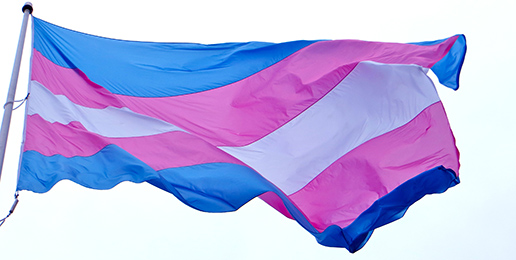Written by Trevin Wax
In case you’re just tuning in, Bruce Springsteen, Target, and bathrooms are at the center of controversy these days, as Americans learn more about the T in the LGBT acronym – Transgender.
Broadly speaking, transgender refers to people who believe their gender identity does not correspond to their biological sex. The psychological description, which applies to a narrower slice of those who identify as transgender (and some who do not so identify), is “gender dysphoria,” defined by Mark Yarhouse as “a deep and abiding discomfort over the incongruence between one’s biological sex and one’s psychological and emotional experience of gender.”
With Caitlyn Jenner’s appearance on the cover of Vanity Fair last year, and books and shows like Transparent finding an audience, there is a societal push to celebrate transgender experience as an expression of human diversity or as the next stage in extending human rights.
But this push has run into pushback. Access to bathrooms and locker rooms may be the battleground, but the bigger debate concerns the nature of humanity and, by extension, the best way to approach (or treat) gender dysphoria.
These newfound controversies are complicated, at least in part because of transgender theory itself. The unmooring of “gender identity” from “biological sex” leads to a number of unresolved questions, as well as troubling inconsistencies among advocates of transgender rights. (I realize that not every transgender person or LGBTQ activist agrees on every point or holds to the same ideology. Still, there is broad agreement on a number of important issues.)
In my reading of articles and books about gender identity in the past year, I’ve come across seven issues that challenge the coherence of transgender theories.
1. Do transgender theories undercut or contradict the idea that sexual orientation is unchangeable?
The LGBT’s success in pushing for civil rights legislation on the basis of sexual orientation has relied heavily on the assumption that sexual orientation is “fixed,” or genetically determined. But more and more scholars today argue that sexual orientation is “fluid,” not fixed (especially in females). And these two perspectives are colliding in real life situations involving transgender persons.
Last year, New York magazine’s article “My Husband is Now My Wife” by Alex Morris featured the stories of several spouses of transgender persons who transitioned later in life. Morris describes the women who witnessed their husbands’ transition as feeling pressured to not voice any disapproval, to avoid the accusation of being “transphobic.” They were expected to be “celebratory” and helpful,” no matter how their spouse’s transition would affect the rest of the family.
LGBT theory rests on the assumption that sexual orientation is determined by biology and that it is misguided, even hateful, to seek to change one’s orientation. But, as Morris points out, the spouse of a transgender person is expected to remain and support a partner during and after their transition. And for a wife to celebrate her husband’s transition means she must face questions about her own sexual orientation.
The article quotes from a woman perplexed about what it means for her, a heterosexual woman, to suddenly be the spouse of a woman. She says, “I don’t know how comfortable I would feel in a group of lesbians…Because here I am doing the very thing that they’re trying to prove is not possible” — change the gender to which she is attracted. Such an expectation destabilizes some of the foundational elements of LGBT theory on homosexuality.
2. If gender identity is fixed and unchangeable, why do many children who experience gender dysphoria lose these feelings after puberty?
The next wave of societal controversy is likely to involve one’s approach to children. Studies show that a significant number of people who experience varying degrees of gender dysphoria as children choose to identify with their biological sex after puberty.
New Jersey currently forbids any change or direction given to a child’s sexual orientation or gender identity or expression. A similar bill in Canada assumes that sexual orientation and gender identity are the same – determined at birth.
But, as Alice Dreger in Wired points out, “by ‘affirming’ a ‘transgender’ identity as soon as it appears—the clinician might actually be stimulating and cementing a transgender identity… Maybe the child who is ‘affirmed’ will be just as well off with a transgender identity as she would have been without, but the fact is that being transgender generally comes with non-trivial medical interventions, including hormonal and surgical.”
3. When a person feels a disjunction between one’s sex at birth and one’s gender identity, why is the only course of action to bring the body into closer conformity with the person’s psychological state, rather than vice versa?
If the disjunction a transgender person feels between their gender and their body is psychological, why should we recommend invasive surgical procedures to make the body more closely match the mind instead of seeking treatment that might help move the mind closer to the sex they were assigned at birth?
In other words, why do many transgender advocates claim that the only loving response to a transgender person is to support their desire for a surgical procedure? The most extensive studies of people who have undergone sex-reassignment surgeries (in Sweden, over a period of thirty years, in a culture that celebrates transgender persons) delivered disturbing results, including a much higher suicide rate.
Furthermore, how do these surgeries fit into the broader medical tradition in which the purpose of treatment is (usually) to restore bodily functions and faculties that are ordered toward certain ends? Why is it acceptable to oppose a “transabled” person’s desire to undergo surgery that would blind them, or leave them without a limb, but it is “hateful” and “transphobic” to oppose surgeries that damage body parts that are in no way dysfunctional?
4. Is the higher rate of suicide among transgender persons due primarily to the inner tensions of experiencing gender dysphoria as a disorder, or are these acts motivated primarily by societal rejection?
In the past six months, I have noticed the same trend among many transgender advocates: that questioning a course of treatment or wondering out loud about the significance or meaning of gender in a way that dissents from transgender theory is responsible for transgender suicides. According to this way of thinking, gender binaries are inherently oppressive and damaging to the mental health of transgender persons.
I recall reading a columnist last year who was sympathetic to transgender concerns and who asked for patience on the part of transgender activists as he and others learned how to adopt the new linguistic guidelines and avoid causing unnecessary offense. A transgender woman fired off a response claiming that such a request is impossible because people are killing themselves due to these kinds of verbal mistakes.
It is difficult to make the case that transgender persons exhibit no signs of mental disorder while at the same time saying that the wrong pronoun can lead a person to suicide.
5. Why are the strongest critics of “gender binaries” the most likely to support gender stereotypes on display in transgender celebrities?
Feminist writer Elinor Burkett explained in the New York Times last year her surprise at seeing our society’s idea of womanhood return to the stereotypes she had long fought against.
“Suddenly, I find that many of the people I think of as being on my side — people who proudly call themselves progressive and fervently support the human need for self-determination — are buying into the notion that minor differences in male and female brains lead to major forks in the road and that some sort of gendered destiny is encoded in us.”
I have seen LGBT activists decry the notion that one can, by visual representation only, determine the gender of a person, and at the same time question the legitimacy of someone’s claim to being transgender based on the visual perception (or lack thereof) of their desire to transition.
Why do those who demand empathy and acceptance toward the transgender experience dismiss feminist critics who believe the movement fails to properly understand the female experience?
Burkett goes on to write:
“People who haven’t lived their whole lives as women, whether Ms. Jenner or Mr. Summers, shouldn’t get to define us. That’s something men have been doing for much too long… Their truth is not my truth. Their female identities are not my female identity. They haven’t traveled through the world as women and been shaped by all that this entails. For me and many women, feminist and otherwise, one of the difficult parts of witnessing and wanting to rally behind the movement for transgender rights is the language that a growing number of trans individuals insist on, the notions of femininity that they’re articulating, and their disregard for the fact that being a woman means having accrued certain experiences, endured certain indignities and relished certain courtesies in a culture that reacted to you as one. The ‘I was born in the wrong body’ rhetoric favored by other trans people doesn’t work any better and is just as offensive, reducing us to our collective breasts and vaginas.”
6. Why must one’s declared gender identity be accepted without question, while other forms of self-identification can be dismissed?
In making her point about women embracing men who transition, Burkett writes:
“Imagine the reaction if a young white man suddenly declared that he was trapped in the wrong body and, after using chemicals to change his skin pigmentation and crocheting his hair into twists, expected to be embraced by the black community.”
Something similar took place last year with Rachel Dolezal, the former president of a chapter of the NAACP. One columnist described Dolezal’s claim as “perverse and pathological,” a version of “identity theft” that fails to consider the cultural significance of the African American experience.
“For me, Black-identifying was not a choice so much as a fact. I am Black. Rachel Dolezal is not.”
This categorical rejection of Dolezal raises interesting questions about people’s freedom to self-identify. Unmoored from biology, what reasons can we give to oppose a white man’s decision to identify as a Chinese woman, or a man in his forties who decides to identify and live as a seven-year-old, or the tragic cases of otherkin – people identifying as animals? Please note: I am not claiming that these other modes of identification are on the same plane as gender dysphoria, only that there is no established consensus for why certain experiences are embraced and celebrated while others are considered outrageous or the sign of a mental illness.
7. Without a settled definition in our legal system for transgender, how can we avoid all sorts of problems, including bathroom access?
“Presumably, post-transition transgender people look like the gender they identify with. Who, exactly, is going to stop someone who looks like a woman from walking into a ladies’ room? Or someone who looks like a man from walking into a men’s room? The American nanny state may be out of control, but we still don’t have bathroom police.”
So why the uproar? Because, without clear definitions and markers of transgender beyond “I am what I say,” we are left with unclear guidelines and chaotic standards. Carl Trueman pointed to the incoherent regulations proposed by his local school board:
“On the one hand, it asserts that a student’s asserted gender identity has to be accepted, and must not be questioned or disregarded by staff. Moreover, the only exception is if staff have a ‘credible basis’ for believing the student is ‘improperly’ asserting a gender identity, vague and undefined terms that are open to abuse. Yet, the policy also claims that a student’s transgender status may constitute confidential medical information that should not be disclosed to parents or others, suggesting it is a medical condition. Which is it?”
Conclusion
The debate over the T in LGBT is likely to get louder in coming years. Yes, there are some in our society who would scapegoat people with gender dysphoria who would cast them as predators and “freaks.” Meanwhile, there are others who believe societal evolution depends on the abolishing of gender altogether and see the transgender experience as a way of moving beyond oppressive structures of “male” and “female.”
For Christians, however, neither of these options is available to us.
We believe God’s design of male and female to be structurally good, but we also understand gender dysphoria to be another symptom that reminds us we live in a fallen world. For this reason, we must extend love and compassion to anyone who experiences this kind of distress, even as we reject society’s efforts to establish a fluid understanding of personhood.
This article was originally published at TheGospelCoalition.com.






















